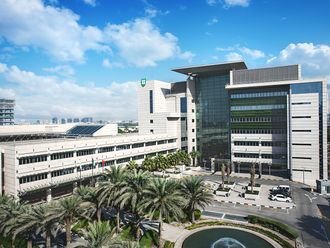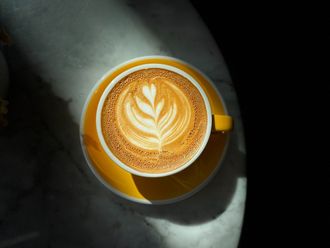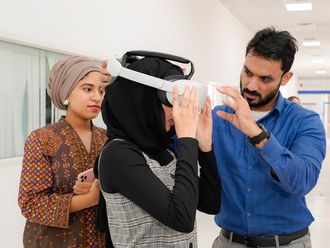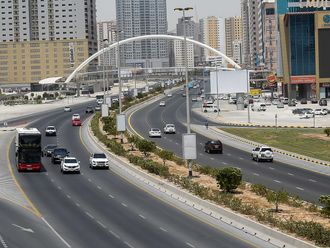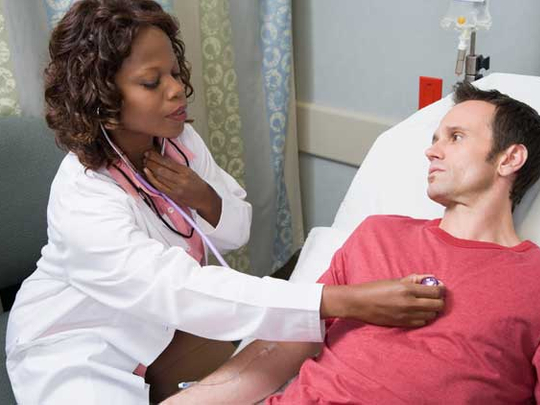
Dubai: Cardiovascular disease (CVD) in the UAE poses the biggest health challenge as it accounts for 30 per cent of mortalities after road trauma injuries, World Health Organisation (WHO) statistics indicate.
The onset of CVD has a worldwide average of 65 years while in the UAE the onset age is 45. One of the biggest reasons for this is the incidence of non-communicable diseases such as diabetes (nearly 19.3 per cent of the population) and obesity (nearly 66 per cent of the population).
This, he believes, is why occasions such as World Heart Day are important to draw attention to the issue. “World Heart Day is a perfect opportunity to start the conversation [on prevention of heart disease]. If we take heart failure, for example, there’s a common misconception that it only affects older people, but the numbers are increasing in younger generations too. I have seen many patients in my clinic in their 20s and 30s who have developed heart failure and they hadn’t realised their heart was weak in the first place,” said Dr Bader.
World Heart Day Goals
The theme for the World Heart Federation’s designated World Heart Day falling on September 29 is ‘Power your life’. It’s about understanding what fuels our heart and provides power to our lives.
One of the goals of the UAE National Health Agenda is to reduce the incidence of CVD by nearly 50 per cent. According to a 2014 report of WHO, the incidence of deaths due to CVD in UAE stand at 297.6 per 100,000 of the population and the National Health Agenda has set a target to reduce it to 158.2 per 100,000 of the total population which is reducing the incidence by nearly 86.8 per cent in less than seven years, which seems a tall order.
Gulf News looks at some of the leading surgical interventions, many of them minimally invasive, that are helping the UAE work towards achieving this goal.
1. Beating heart surgery: This involves surgery without stopping the heart and without the heart replacement machine. This procedure reduces the risk and aids fster recovery.
Dr Varma, a leading beating heart surgery expert at NMC Speciality Hospital, Dubai, explains: “Traditionally, during a cardiac surgery, the heart is stopped and its function taken over by the heart and lung machine. Now we conduct what is called the Off Pump Coronary Artery Bypass (PCAB) wherein we are able to do a complete revascularisation of the heart through a small incision even as the heart is beating. I have been able to handle six simultaneous blocks. One of my patients who underwent such a surgery actually ran a marathon within three months of the surgery. It is not only life-saving but provides nearly 99 per cent resumption of the heart’s pumping capacity.”
2. Stem cell therapy to rejuvenate disease heart tissue: This is a ground-breaking therapy introduced at Burjeel Hospital Abu Dhabi. Professor Dr Waleed Shaker, consultant cardiac surgeon at Burjeel Hospital, explains: “Stem cells have been used for the last two decades in the West for certain kinds of cancers such as leukaemia and conditions like multiple sclerosis. For the first time, this technique is being used in CVD. Essentially, primary cells are drawn from an individual’s bone marrow or intestines and implanted at the sight of the diseased heart muscle. Usually in conditions such as rheumatic heart disease or arteriosclerosis, the heart tissue gets damaged due to a lack of oxygen and gets fibrotic. Eventually, a person suffering from such damaged tissue would require a heart transplant. However, this technique helps rejuvenate the specific heart tissue as the stem cells adapt and grow [the tissue] once implanted in that area. We are working in collaboration with the Vienna Stem Cell Therapy Centre to achieve these results. In the West, there have been several studies that indicate a good success rate. However, this is new in the UAE and will take time to have medical precedents.”
3. Valve repair surgeries (repair damaged natural human valves instead of replacement artificial valves):
“When the heart has to work harder, it gets enlarged. Individuals experience fatigue and breathlessness. Earlier, the standard method was to replace the valve with stainless steel or titanium prosthesis but the biggest drawback was that the individual had to be on blood-thinning medication for life. The new method repairs the valve through a minimally invasive procedure by placing a ring-like scaffolding in the valve. The ring is malleable, helps the doctor shape the valve and tighten it and the patient does not require life-long thinning medication.
“The other technique used to naturally repair a valve is called Trans Catheter Mitral valve angioplasty where a catheter is put through the right atrium and a special clip-like device is placed which reduces the laxity in the valve.”
While natural repair of existing valves was showing great success, Dr Lochan added that not all candidates were ideal candidates. “Repairing of natural valve is preferred when a patient is at an advanced age and such a minimal invasive surgery allows him to recover fast. But the technique and equipment is steadily improving and catheter labs are getting increasingly sophisticated, Very soon, this will be available for all patients as it allows for quick recovery. In the UAE, this technique is being provided at leading government hospitals as it requires state-of-the-art technology. Very soon, it will be extensively available and reduce cardiac myopathy-related fatalities.”


